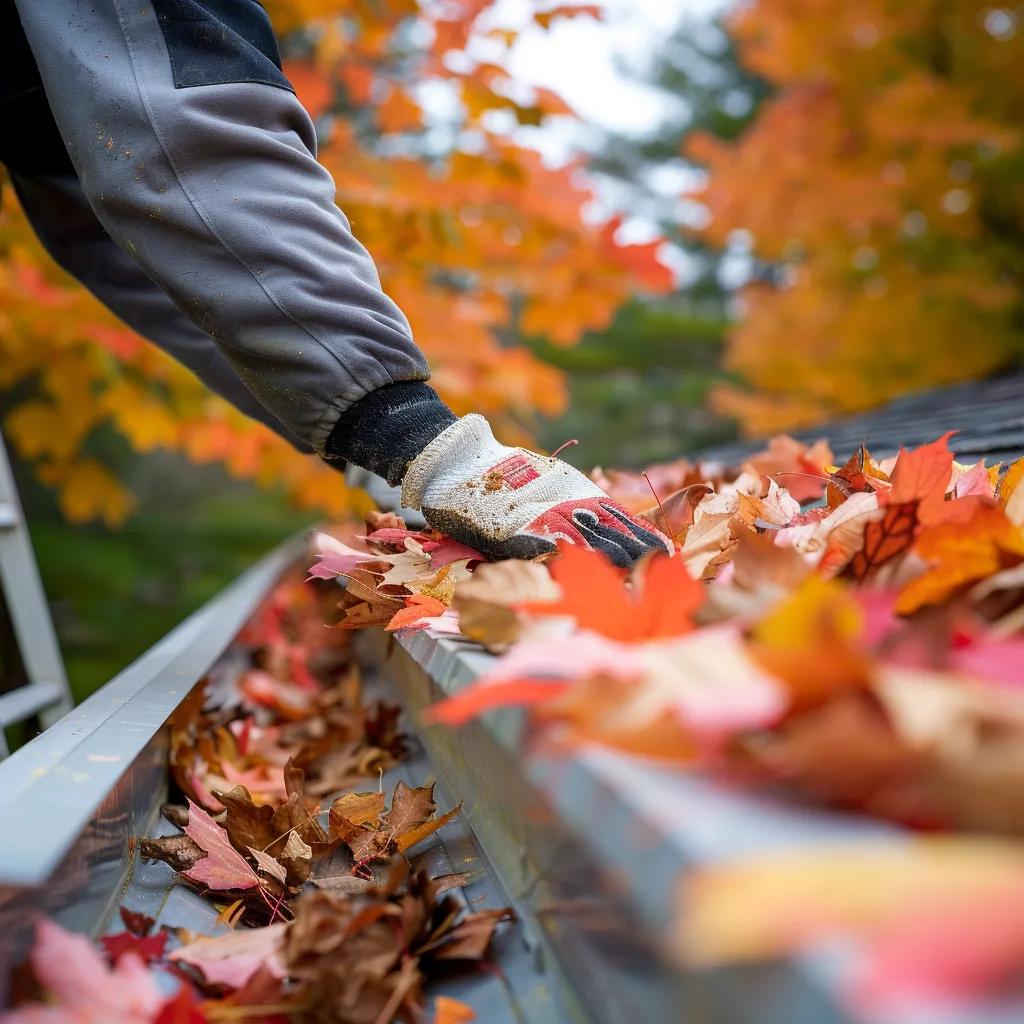What to Include in Your Seasonal Roof Maintenance Checklist: Essential Tasks for Year-Round Roof Protection

Neglecting seasonal roof maintenance can lead to costly repairs, premature aging, and structural damage. A well-structured seasonal roof maintenance checklist empowers homeowners and business property owners to detect issues early, extend roof lifespan, and ensure reliable year-round protection.
Importance of Regular Roof Inspections
Regular roof inspections are crucial for identifying potential issues early, preventing costly repairs, and extending the lifespan of your roof. Early detection of problems like cracked shingles or damaged flashing allows for timely intervention, minimizing the risk of water damage and structural issues.
This supports the article’s emphasis on the importance of seasonal roof maintenance and the benefits of early problem detection.
This seasonal overview highlights each major task and its driving purpose, guiding you into detailed steps below.
What Are the Key Tasks in a Spring Roof Maintenance Checklist?

A spring roof maintenance checklist compiles tasks to address winter wear, ensuring your roof remains watertight and resilient. These activities reduce the risk of leaks caused by freeze-thaw cycles and ice damage. For example, catching cracked shingles early prevents water infiltration that can harm insulation and interior finishes.
How Do You Inspect Your Roof for Winter Damage?
Inspecting winter damage involves checking for cracked shingles, loose flashing, and granule loss to identify compromised areas.
- Walk the perimeter to spot missing or broken shingles.
- Examine flashing around chimneys, vents, and skylights for gaps.
- Check roof valleys for shingle granule buildup that indicates wear.
Identifying these issues now allows for prompt minor repairs before heavy spring rains arrive.
What Is the Best Way to Clean Gutters and Downspouts in Spring?
Clearing gutters and downspouts removes debris that can trap moisture against your roof edge.
- Use a sturdy ladder and gloves to scoop out leaves and pine needles.
- Flush downspouts with a hose to confirm unobstructed water flow.
- Inspect hangers and seals for rust or damage that could loosen gutters.
Clean gutters ensure proper drainage, reducing the chance of water backing up under shingles.
How Can You Detect and Address Early Roof Leaks?
Detecting early leaks prevents mold growth and structural decay.
- Look for water stains or discoloration on attic sheathing and drywall.
- Check for mold or musty odors in attic spaces indicating past moisture.
- Examine soffits for dark streaks or peeling paint from drip-through.
Addressing these signs immediately with sealants or shingle replacement keeps your roof watertight.
When Should You Schedule a Professional Spring Roof Inspection?
Schedule a professional spring inspection 4–6 weeks after the last freeze to catch hidden damage. A certified roofer will use specialized tools and safety protocols to assess your roof comprehensively.
- Detect hairline cracks and unseen membrane failures.
- Verify flashing seals and edge fasteners are intact.
- Provide a maintenance report with prioritized recommendations.
Contact Rooftitan’s spring roof maintenance services at www.rooftitan.com to book an expert assessment.
What Should Be Included in a Summer Roof Maintenance Checklist?
A summer roof maintenance checklist focuses on heat-related stress and pest prevention to maintain roof integrity under high temperatures. Performing these tasks keeps ventilation efficient and shingle materials from deteriorating prematurely.
How Do You Ensure Proper Attic Ventilation During Summer?
Ensuring attic ventilation regulates interior temperatures and prevents moisture buildup.
- Inspect soffit and ridge vents for blockages or insect nests.
- Measure attic temperature; it should be within 10 °F of outdoor ambient.
- Verify attic fans or turbines run freely and exhaust air effectively.
Balanced ventilation protects roofing materials from thermal shock and mold.
Benefits of Proper Attic Ventilation
Proper attic ventilation is essential for regulating the temperature and moisture levels within your attic, which helps to protect your roofing materials from premature deterioration. Adequate ventilation prevents the buildup of heat and moisture, reducing the risk of mold growth and extending the life of your roof.
This citation reinforces the article’s advice on maintaining proper attic ventilation to prevent heat and moisture buildup.
Why Is Trimming Overhanging Branches Important for Roof Health?
Trimming branches eliminates abrasion and debris that accelerate shingle wear.
- Cut back limbs at least 6 ft from roof surfaces to prevent contact.
- Remove dead or weakened branches that could fall during storms.
- Dispose of trimmed material to avoid gutter clogging.
Clearance reduces damage risk and limits pest access to roof structures.
How Can You Identify and Manage Pest Activity on Your Roof?
Monitoring pest activity prevents nests and structural damage from rodents or insects.
- Look for droppings, gnaw marks, or entry holes under eaves.
- Inspect attic insulation for signs of nesting or urine stains.
- Install wire mesh over vents and gable openings to block access.
Early pest management safeguards roofing components and indoor air quality.
What Are the Signs of Heat Damage to Roof Shingles?
Recognizing heat damage helps you replace compromised shingles before leaks develop.
- Spot curling, blistering, or faded granules on shingle surfaces.
- Check for cracked sealant strips that no longer adhere.
- Inspect underlayment visible at eaves for brittleness or cracking.
Prompt shingle replacement preserves watertight protection and curb appeal.
How Do You Prepare Your Roof for Winter with a Fall Maintenance Checklist?
A fall roof maintenance checklist ensures your roof is ready for freeze-thaw cycles and snowfall by addressing debris, seals, and insulation. Completing these steps prevents ice dams and heat loss in colder months.
What Are the Best Practices for Thorough Gutter Cleaning in Fall?

Thorough gutter cleaning in fall removes leaves and debris that lead to winter clogs.
- Clear gutters after the majority of leaves have fallen.
- Inspect downspout outlets for blockages at ground level.
- Secure loose hangers and replace cracked gutter sections.
Clean gutters in fall lay the foundation for effective winter drainage.
How Do You Inspect Flashing and Seals Before Winter?
Inspect flashing and seals to prevent water intrusion under snow and ice.
- Look for cracked or lifted metal flashing around chimneys and vents.
- Apply polymeric sealant to gaps larger than 1/8 in.
- Verify valley metal is flush and fasteners remain tight.
Secure flashing now avoids leaks when temperatures drop.
Why Is Assessing Roof Insulation Important in Fall?
Assessing insulation prevents ice dams by maintaining even roof temperatures.
- Measure attic insulation depth; aim for R-38 or higher in cold climates.
- Seal attic bypasses around plumbing and wiring with spray foam.
- Confirm attic floor vents are unobstructed to allow airflow.
Proper insulation and sealing keep roof decks cold and ice-dam free.
How Can You Prepare Your Roof to Prevent Ice Dams?
Prevent ice dams by maintaining consistent roof surface temperatures and drainage.
- Clean gutters and install heat cable along eaves if needed.
- Ensure attic air barrier is continuous to stop warm air leaks.
- Add attic insulation baffles to maintain vent airflow.
These fall tasks minimize ice buildup and protect gutters and fascia.
What Are the Critical Tasks in a Winter Roof Maintenance Checklist?
A winter roof maintenance checklist focuses on snow and ice management, leak monitoring, and emergency readiness to safeguard your roof under harsh conditions.
How Should You Safely Remove Snow from Your Roof?
Safely removing snow reduces weight stress and prevents ice dams.
- Use a roof rake from the ground to pull snow down in layers of 2 in.
- Avoid walking on slippery roofs; hire professionals for steep pitches.
- Keep a safe distance from eaves and power lines.
Layered snow removal prevents sudden overload and roof sagging.
What Is Ice Dam Management and Why Is It Crucial?
Ice dam management entails removing and preventing ice ridges that force water under shingles.
- Gently chip away ice at gutters using plastic shovels.
- Apply calcium chloride ice melt in vented socks inside gutters.
- Maintain attic ventilation to keep roof deck cold.
Effective ice dam control protects against interior water damage and board warping.
How Can You Monitor for Leaks and Condensation During Winter?
Monitoring for leaks and condensation stops minor issues from escalating into major damage.
- Check attic periodically for water stains or icicles forming indoors.
- Inspect ceiling fixtures and attic lights for moisture spots.
- Use a handheld moisture meter on suspect areas.
Timely detection allows for swift patching or sealant application.
When Is Emergency Roof Repair Necessary in Winter?
Emergency roof repair in winter is required for active leaks, collapsed panels, or heavy damage.
- Address sudden interior dripping or ceiling bulges immediately.
- Call a certified contractor if structural elements show sagging.
- Secure tarps over exposed areas to prevent further water entry.
Professional winter repairs restore integrity and prevent secondary damage.
When Should You Call a Professional for Seasonal Roof Maintenance?
Professional seasonal maintenance delivers expert inspection, early issue detection, and cost savings through preventive care. Engaging a certified roofing contractor ensures specialized tools and techniques address complex problems.
These metrics show how professional seasonal checks deliver tangible value by extending roof life and minimizing emergency repairs.
Safeguarding your roof with Rooftitan’s certified roofing contractors ensures comprehensive seasonal care and peace of mind. Schedule your maintenance plan today at (123) 456-7890 or via our contact form at www.rooftitan.com/contact. Protect your investment with year-round expertise and avoid costly surprises down the road.



